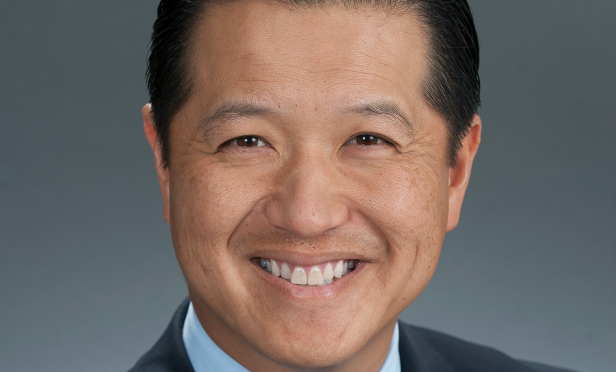 Los Angeles Mayor Eric Garcetti is ramping up the city's already aggressive mass transit expansion plans. He has announced the Twenty-Eight by 28 initiative to accelerate the development of 28 of Metro's transit project in time for the Summer Olympics in 2028. To fin out more about the initiative, the challenges are of accelerating the construction of these projects and how it will potentially impact commercial real estate, we sat down with Jack S. Yeh, a partner at Sidley Austin LLP, for an exclusive interview.
Los Angeles Mayor Eric Garcetti is ramping up the city's already aggressive mass transit expansion plans. He has announced the Twenty-Eight by 28 initiative to accelerate the development of 28 of Metro's transit project in time for the Summer Olympics in 2028. To fin out more about the initiative, the challenges are of accelerating the construction of these projects and how it will potentially impact commercial real estate, we sat down with Jack S. Yeh, a partner at Sidley Austin LLP, for an exclusive interview.
GlobeSt.com: What is the twenty by 28 initiative?
Jack S. Yeh: The Twenty-Eight by '28 initiative is Mayor Eric Garcetti's plan to complete 28 Metropolitan Transportation Authority transit projects before the beginning of the 2028 summer Olympic games. The plan, which was recently approved by the Metro Board of Directors, on which Garcetti serves as the Chairman, prioritizes transportation construction spending and project completion goals for a specific list of transit, highway and bike path projects throughout the region. Projects on the list include: the Crenshaw\LAX Line, which will connect to a People Mover tram to ferry people in and out of one of the busiest airports in the world; Purple Line extension, which extends the downtown subway route into Century City, Westwood, and West Los Angeles; and a Sepulveda Transit Corridor, a 10-mile North-South route connecting Van Nuys and Westwood.
Many of the 28 projects are already funded by ballot measures overwhelmingly approved by Los Angeles voters in the past 10 years. However, Metro is also in the process of seeking out additional revenue sources to accelerate construction beyond the financial resources allotted by those measures. Public-private partnerships are being pursued as well as potential state and federal grants.
GlobeSt.com: What was the impetus to accelerate the expansion of mass transit in Los Angeles?
Yeh: L.A.'s mass transit expansion plans have been in the works for quite some time. The MTA approved an ambitious Long Range Transportation Plan in 2009, fueled by the November 2008 passage of Measure R, a County-wide half-cent sales tax increase anticipated at the time to generate $40 billion over three decades for transportation projects. In November 2016, another super-majority of Los Angeles residents approved Measure M, another County-wide half cent sales tax increase anticipated to raise over $120 billion over four decades for the MTA's mass transit projects.
The International Olympic Committee's Fall 2017 award of the 2028 Olympics to Los Angeles presented Mayor Garcetti the perfect opportunity to organize and prioritize Metro's many mega projects, as well as advocate for the acceleration of their respective completion dates.
GlobeSt.com: What are the challenges of this new initiative?
Yeh: Every construction project faces a whole host of challenges to on-time completion, like cost over-runs, change orders, etc. A transportation plan as large and as broad as contemplated by the Mayor's plan is even harder to manage. Macro and micro interests often collide. For example, sometimes auto-traffic interests do not always align with local cycling interests or even bus transportation interests. Environmental interests sometimes collide with commercial interests.
Whether there will be conflict or compromise depends in large part on how much the community as a whole buys into the need for habits and viewpoints to change. In Los Angeles, we live in a City of Drivers. If our community can see and feel the benefits of these transportation infrastructure changes, our collective behavior could shift in ways that way lessen freeway traffic, improve ridership and leave more time for people off the road.
GlobeSt.com: How will this impact surrounding commercial real estate?
Yeh: In the short-term, commercial real estate proximately located to these transit projects are likely to have higher utilization rates (translation: there will be more need for goods and services nearby). In the long-term, if the goals of this larger transportation plan are realized—a more efficient mass transit system that delivers riders more efficiently into the various hubs located around the City, commercial real estate should thrive. There are many examples of cities around the world where mass transit is a commonly used form of transportation (e.g., New York City, San Francisco, London, Tokyo, etc.). The urban and commercial centers that have developed around and are connected to those systems have become vibrant areas to work and to live and vice versa. The 2028 Olympics may serve as an advertisement to the world that our City has evolved significantly from the last time they saw us in 1984.
© Touchpoint Markets, All Rights Reserved. Request academic re-use from www.copyright.com. All other uses, submit a request to [email protected]. For more inforrmation visit Asset & Logo Licensing.






